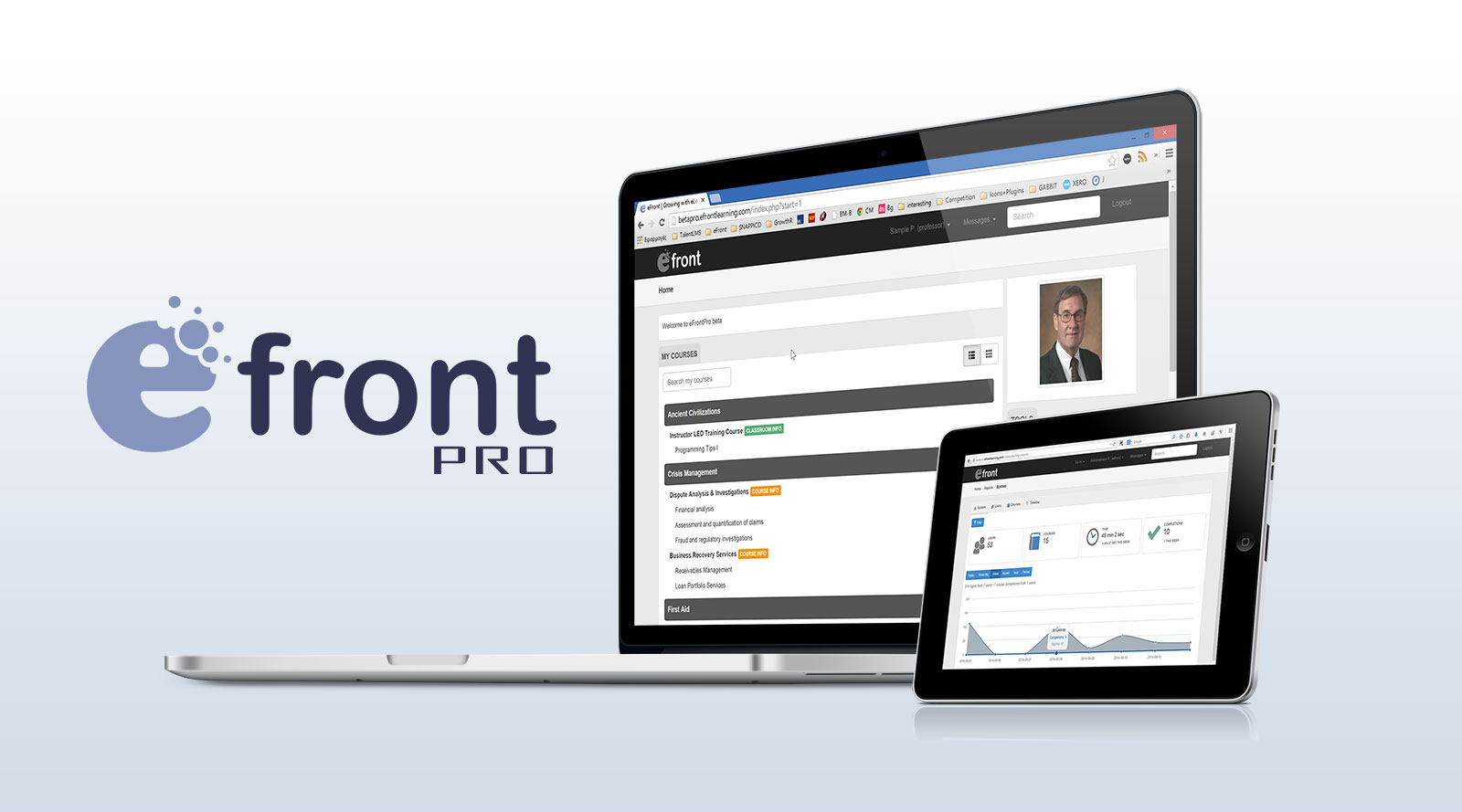
eFront had a new major update recently, with version 4.1.0 bringing a load of workflow updates, user requested features, bug fixes and enhancements. Among them is the new Curriculums feature which (as the title subtly suggests) will be the focus of this blog post.
Curriculums in eFront are an organizing unit for your e-learning content, in addition to the already existing Branches, Groups, Audiences, Skills, etc.
Like their namesake in physical educational institutions, Curriculums serve as a way to organize your courses into a single package (e.g. a mathematics curriculum would consist of courses such as algebra, trigonometry, calculus etc. Similarly, a business curriculum would consist of business, economics and finance related courses).
Organization in eFront however doesn’t stop in being merely a conceptual way of categorizing your courses and related information. It’s also the core mechanism behind eFront’s automated notifications, mass actions, reporting and filtering facilities.
This means that you can use eFront’s organizational grouping units (Branches, Audiences, Groups, Categories and the like, including curriculums as of the latest update) to send automated notifications related to a grouping, perform mass actions affecting all its members at once, view reports aggregated for the grouping and filter information based on it.
In addition, you can also buy and sell complete curriculums (sets of related courses) and award certificates upon completion of a curriculum.
Curriculum creation and management is handled from the “Curriculums” section of the admin user interface. From there you can see a list of all the available curricula and hit the “Add curriculum” button to, err, add a new curriculum.
The basic information required to add a new curriculum is its name and the category it belongs to (e.g. Mathematics, Business, etc.). You can also add an optional short description.

Clicking on the “Advanced” link shows a few more options, like a short code you can use to identify your curriculum (e.g. MATH-01), the branch(es) it belongs to and whether it’s active or if it should be displayed on the Catalog.
Finally, you can set a base price for selling the curriculum, and define a Certificate that will be awarded when a user completes the curriculum.
After you have created your curriculum you can assign courses and users to it. If you have created groups for your users (as you should) you can also enroll all users belonging to a group to a curriculum with the “enroll members to curriculums” mass action.

As we already mentioned, curriculum related events (e.g. a user completing a curriculum) can also be used to trigger notifications. You’ll find the relevant options in the Events list when creating a new Notification.

If you’re using eFront to sell e-learning courses then curriculums provide a handy way to group together related courses to sell as a bundle. Users can buy one or more curriculums, effectively enrolling and buying all the separate courses that the curriculum consists of.
And as with the other groupings in the platform, the Reports functionality in eFront allows you to have insight into all curriculum related statistics and events.
You’ll find those reports in the Curriculums tab of the Reports page, where you can select the curriculum you’re interested in (e.g. Mathematics, First Semester, etc) and even drill further down with additional filters for branches, groups, audiences etc. to see just the information you’re interested in.

And this completes our course on eFront’s Curriculums functionality. You wont be awarded any certificates for completing this blog post, but you’ll nevertheless be ready to take advantage of this new powerful organizational feature in your e-learning deployment!
Until next week, keep warm and happy eFront-ing…


